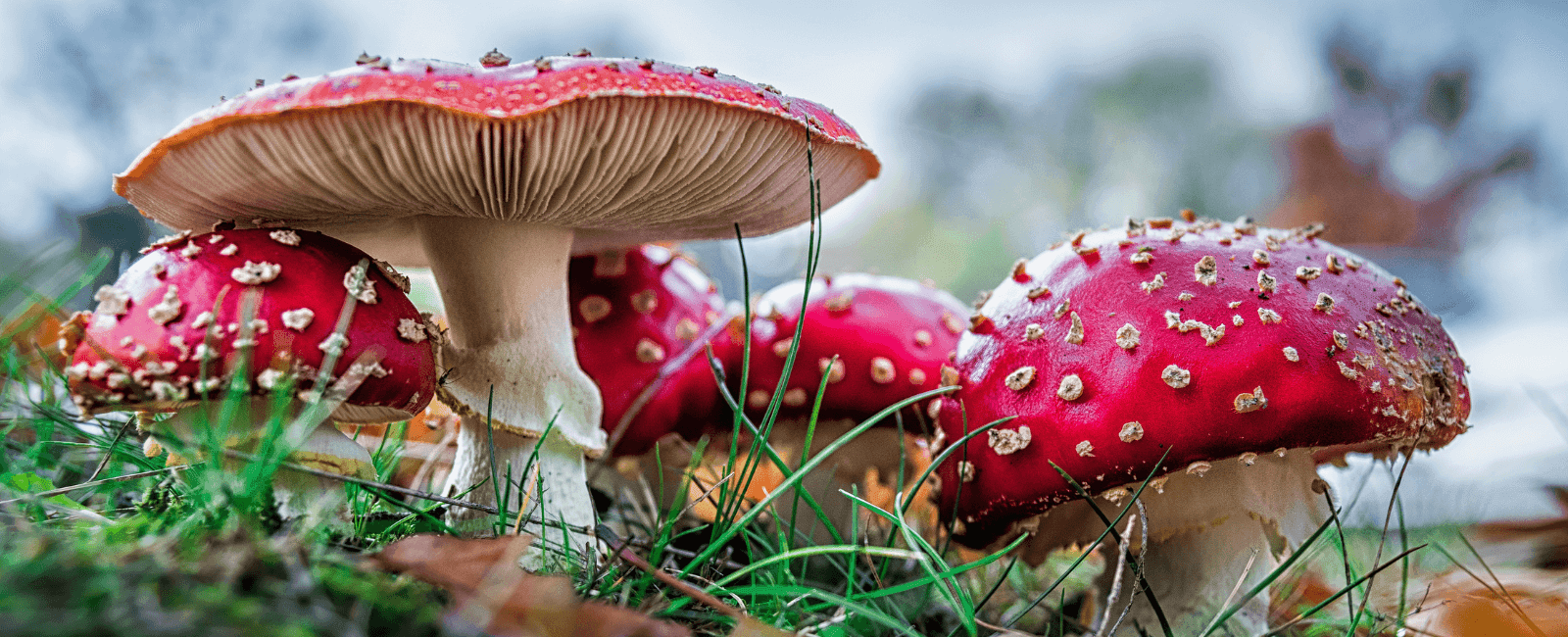

You’ve probably run across the term “toadstool” once or twice, especially if you have done any research on mushroom identification or fungi anatomy. Oftentimes, this word is used interchangeably with “mushroom,” but what exactly is the difference between these two terms? Are they distinct species, or is it merely a matter of semantics?
Understanding fungi
Before we dive into the distinction between toadstools and mushrooms, let’s first establish a common understanding of fungi. Fungi are a kingdom of living organisms and are neither plants nor animals. Unlike plants, fungi lack chlorophyll, making them unable to perform photosynthesis. And unlike animals, fungi do not eat or consume their food. Instead, they obtain nutrients by breaking down organic matter in their environment and absorbing it.
There are over 14,000 types of mushrooms, with each typically having an above-ground fruiting body that facilitates reproduction, and below-ground mycelium and hyphae, which take care of nutrient absorption.
You can learn even more about the parts of a mushroom in our mushroom anatomy article.
Defining toadstools and mushrooms
Toadstools and mushrooms are terms commonly used to describe different types of fungi, but this is not exactly accurate. In fact, there is no clear-cut distinction between the two based on taxonomy (a scientific method of classifying living things) or biology. Using the terms “toadstool” and “mushroom” is more of a cultural and historical division rather than a scientific one.
Characteristics and origins of toadstools
The term Toadstool originated from the old English word “tade-stolec,” where “tade” means toad and “stolec” refers to a stool or seat. This name was given to fungi thought to be poisonous and associated with toads, which were considered unlucky or evil creatures in folklore. Thus, toadstools became synonymous with poisonous mushrooms, often depicted with bright colors and distinct, umbrella-like shapes.
Toadstools typically possess certain characteristics that have come to be associated with the term. They often exhibit bright red, yellow, or white caps with white spots, giving them an almost whimsical appearance. Many toadstools are indeed toxic mushrooms and should be avoided, as they contain harmful compounds that can cause severe illness, “tripping,” or even death if ingested. Some examples of toxic toadstools include the death cap (Amanita phalloides) and the famous hallucinogenic mushroom, fly agaric (Amanita muscaria). However, the term “Toadstool” is not an accurate way to assess whether a mushroom is poisonous or not, as there are many poisonous mushrooms that look uncannily similar to other edible species of mushrooms.
Mushrooms: nature’s edible delights
On the other hand, mushrooms are often considered a natural and healthy food source. They come in various shapes, sizes, and colors, ranging from earthy browns to vibrant yellows. Many culinary enthusiasts appreciate mushrooms for their distinct flavors and nutritional benefits. Common edible mushrooms include the button mushroom (Agaricus bisporus), porcini (Boletus edulis), and oyster mushroom (Pleurotus ostreatus). These delectable fungi are rich in protein, fiber, vitamins, and minerals, making them a valuable addition to a balanced diet.
Similarities and overlaps
While toadstools and mushrooms are often viewed as separate categories, there is considerable overlap between the two. Some fungi can have characteristics of both toadstools and mushrooms. For instance, the fly agaric (Amanita muscaria), with its iconic red cap and white spots, is widely recognized as a toadstool due to its toxic nature. However, it is also consumed in some cultures for recreational or spiritual ceremony purposes. In Celtic Ireland, for example, the term “fairy rings” came about from spiritual ceremonies revolving around eating psilocybin mushrooms.
It is worth seeing that the difference between toadstools and mushrooms can vary across cultures and regions. In some European countries, the term “toadstool” is used to describe all wild mushrooms, not just the poisonous species. In contrast, other cultures make no distinction between toadstools and mushrooms at all, using the words interchangeably. This shows just how subjective these terms are and how they aren’t truly rooted in any scientific categorization.
Toadstools or mushrooms, the choice is yours!
Toadstools and mushrooms, although widely used terms, don’t have exact scientific definitions. The difference between the two is more rooted in cultural, historical, and even personal experiences. While toadstools are often associated with toxic or inedible fungi with colorful caps and distinct shapes, that isn’t always the case. So, feel free to use either or both words as long as you continue to explore and appreciate the amazing world of fungi!


